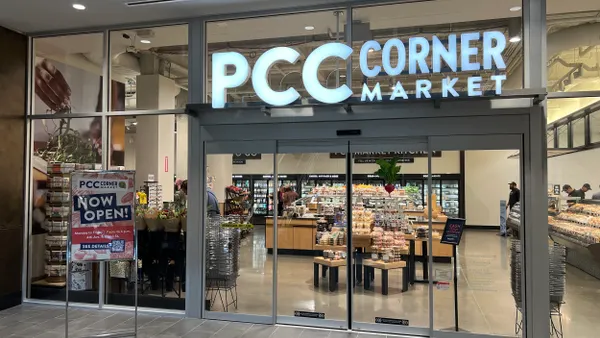With the rise of at-home cooking during the pandemic continuing alongside concerns about food prices, shoppers are turning to a combination of scratch cooking with semi- or fully-prepared items from grocery stores to craft their meals, according to new research.
A “hybrid meal” could be sushi from a grocer’s deli counter as the main dish along with items like rotisserie chicken from the store with homemade mashed potatoes, or a pre-packaged salad with a sandwich made at home. FMI – The Food Industry Association says hybrid meals “can be one part of a meal or a complete meal for breakfast, lunch or dinner.”
This “hybrid meals” approach to at-home preparation is playing a growing role in consumers’ food-at-home eating.
In 2023, more hybrid meals are accounting for consumers’ dinners than last year, while making dinner totally from scratch has dipped, according to the latest findings by FMI.
“The shift to preparing meals at home, particularly in this hybrid method, has also cut into [the] consumption of restaurant meals,” Rick Stein, the trade group’s vice president of fresh foods, said during a recent press call.
The rise of hybrid meals comes at a time when grocers have been beefing up their foodservice options. A quarter of surveyed shoppers said they are replacing restaurant meals with foodservice options, up from 17% who said the same in the previous year, per The Power of Foodservice at Retail report, which was published earlier this month. The report is based on a survey of 1,435 U.S. adult grocery shoppers between Sept. 13-22.
Grocers are already jumping on the trend of highlighting their deli-prepared options. ShopRite has been rolling out its Fresh to Table concept, which emphasizes a one-stop-shop for ready-to-cook, ready-to-heat and ready-to-eat options alongside private label items, to more of its stores this year. Department displays for the concept carry messages like “Rah, Rah, Rotisserie” and “Made with love for later.”
Cingari Family ShopRite, a family-owned chain with a dozen Connecticut stores, has said the price point and size make its prepared salads a popular alternative to ones from restaurants.
Deli dollar sales grew to $49.9 billion in the 52 weeks that ended Oct. 27, up from 4.2% during the same period a year ago, according to NielsenIQ data cited by FMI in the report.
“It’s clear that shoppers increasingly appreciate the convenience and value that foodservice at a grocery store offers, whether it be to help round out the home-cooked meal with freshly made sides or supplying an entire meal that customers can cut can eat at home, which is cheaper than food at restaurants,” Stein said during the recent press call.
The appeal of foodservice largely links to cost concerns. Despite the rate of inflation easing in the past few months, 72% of surveyed shoppers express concern about rising food prices at grocery stores, FMI noted in another recent report.
Consumer willingness to pay for deli-prepared decreases as meal price per person increases
Foodservice is also standing out as an opportunity for some consumers to make choices aligned with health and well-being. FMI’s research found that almost two-thirds of shoppers said they shop for deli-prepared foods with at least some focus on nutritional value.
Already, retailers have invested in chefs and specialty staff, increased their space allocation and enhanced their variety of food options in an effort to re-energize food service departments, Stein said.
The grocery industry still has some areas to improve upon, FMI noted. Grocers’ foodservice can become even more appetizing by providing a wider variety of cuisine, online ordering capabilities and easy pick-up or delivery options, the trade group found. Grocers need to switch to a restaurant-like mentality for foodservice and deli, Stein said.
Meal planning, in particular, is an area where consumers struggle, Stein said, noting that bundling ingredients together can help. In addition to bundles, FMI’s research found that more heat-and-eat choices, meal-focused end cap displays and meal-planning tools on retailers’ apps are top consumer picks.
Other strategies highlighted in the report include:
- Serving up “signature” foodservice items
- Highlighting how far shoppers’ dollars go at retail compared to restaurants
- Offering up an online foodservice menu like a restaurant
- Having dedicated marketing focused on spotlighting foodservice
- Drawing attention to items and attributes that better meet shoppers’ nutrition and health needs.
Hybrid meals appear to have a bright future. For 2024, more than half of surveyed consumers said they plan to eat more at home (53%) and cook more at home (52%). Meanwhile, only 14% said they plan to dine out more next year, per FMI’s research.
“Clearly shoppers are responding to these changes and foodservice at retail is more on their radar than ever before,” Stein said.












